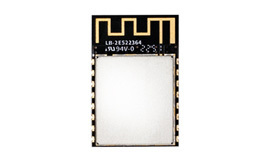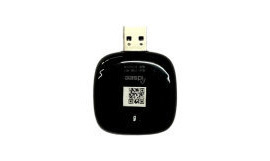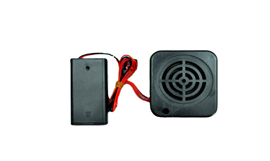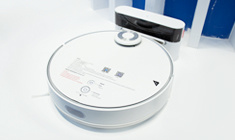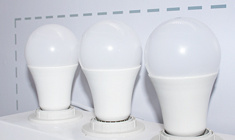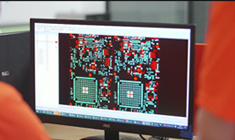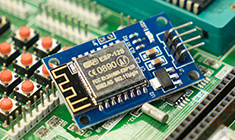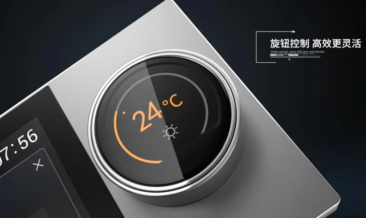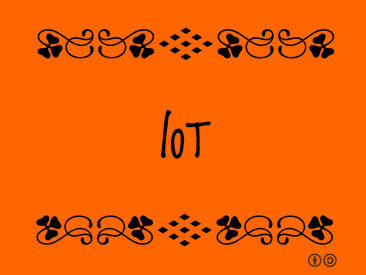
RFID technology principle and RFID tag antenna detailed explanation
Release Time:
2020-12-16
1 IntroductionRadio frequency identification is a non-contact automatic identification technology using radio frequency technology. It has the advantages of fast transmission rate, anti-collision, mass reading, and motion process reading. Therefore, RFID technology is widely used in logistics and
1 Introduction
Radio frequency identification is a non-contact automatic identification technology using radio frequency technology. It has the advantages of fast transmission rate, anti-collision, mass reading, and motion process reading. Therefore, RFID technology is widely used in logistics and supply chain management, production management and control . , Anti-counterfeiting and security control, traffic management and control and other fields have great application potential. At present, the working frequency bands of radio frequency identification technology include low frequency, high frequency, ultrahigh frequency and microwave bands, among which high frequency and ultrahigh frequency are the most widely used.
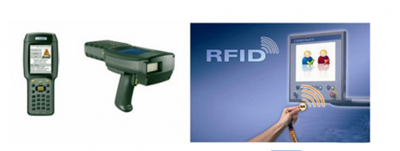
2 Principles of RFID technology
The RFID system is mainly composed of a reader (target) , a transponder (RFID tag ) and a background computer. Among them, the reader can read, write and store data on the tag, and is composed of a control unit, a high-frequency communication module and an antenna. The tag It is mainly composed of an integrated circuit chip and an external antenna. The circuit chip usually includes circuits such as radio frequency front-end, logic control, and memory. According to the principle of power supply, tags can be divided into active (acTIve) tags, semi-active (semiacTIve) tags and passive (passive) tags. Passive tags are popular because of their low cost and small size.
The basic working principle of the RFID system is: after the tag enters the reader-writer to emit the RF field, the induced current obtained by the antenna is used as the power supply of the chip after the boost circuit, and the induced current with information is converted into a digital signal through the RF front-end circuit to send Enter the logic control circuit for processing, and the information that needs to be replied is sent from the tag memory, sent back to the RF front-end circuit through the logic control circuit, and finally sent back to the reader through the antenna.
3 Antennas in RFID systems
From the principle of RFID technology, the key to the performance of RFID tags lies in the characteristics and performance of the RFID tag antenna. The antenna plays a key role in the data communication process between the tag and the reader. On the one hand, the chip startup circuit of the tag starts to work, and it needs to obtain enough energy in the electromagnetic field generated by the reader through the antenna; on the other hand, the antenna determines The communication channel and communication method between the tag and the reader. Therefore, the research on the antenna, especially the internal antenna of the tag, has become the focus.
3.1 Types of RFID system antennas
According to the power supply mode of the RFID tag chip, the RFID tag antenna can be divided into two types: active antenna and passive antenna. The performance requirements of active antennas are lower than those of passive antennas, but their performance is greatly affected by battery life: passive antennas can overcome the shortcomings of active antennas limited by batteries, but they have high performance requirements for antennas. At present, the research focus of RFID antennas is on passive antennas. Divided from the working frequency band of the RFID system, in the RFID system operating in the LF and HF bands (such as 6.78MHz and 13.56MHz) , the transmission of electromagnetic energy is completed in the induction field area ( like a stable field ) , also known as an inductive coupling system ; In the UHF segment ( such as 915MHz , 2400Mttz) system, the transmission of electromagnetic energy is completed in the far field area ( radiation field ) , also known as the microwave radiation system. Since the energy generation and transmission methods of the two systems are different, the corresponding RFIDTag antennas and front-end parts have their own particularities, so tag antennas are divided into near-field induction coil antennas and far-field radiation antennas. The inductive coupling system uses a near-field induction coil antenna, which is composed of a multi-turn inductance coil. The inductance coil and the capacitor connected in parallel with it form a parallel resonant circuit to couple the maximum radio frequency energy; the types of far-field radiation antennas used in the microwave radiation system are mainly It is a dipole antenna and a slot antenna. The far-field radiation antenna is usually resonant, and generally takes half a wavelength. The shape and size of the antenna determine its performance such as the frequency range it can capture. The higher the frequency, the more sensitive the antenna and the smaller the occupied area. Higher operating frequencies allow for smaller tag sizes, and far-field radiating antennas have higher radiation efficiency compared to near-field inductive antennas.
3.2 Design requirements of RFID tag antenna
The design requirements of the RFID tag antenna mainly include: the physical size of the antenna is small enough to meet the needs of tag miniaturization ; it has omnidirectional or hemispherical coverage ; it has high gain and can provide the chip with the largest signal to the tag ; impedance matching Well, the polarization of the tag's antenna matches the signal from the reader no matter what orientation the tag is in ; robust and low cost. The main considerations when selecting an antenna are: the type of antenna, the impedance of the antenna, the RF performance applied to the item , and the RF performance when there are other items surrounding the tagged item .
4 Types and Research Status of RFID Tag Antennas
Tag antennas are mainly divided into three categories: coil type, dipole, and slot ( including microstrip patch ) type. The coil antenna is to coil the metal wire into a plane or wind the metal wire on the magnetic core ; the dipole antenna is composed of two straight wires of the same thickness and length arranged in a straight line, and the signal is fed from the two ends in the middle. The length of the antenna determines the frequency range ; the slot antenna is composed of a groove cut out of the metal surface, and the microstrip patch antenna is composed of a circuit board with a rectangle at the end, and the length and width of the rectangle determine the frequency range.
The RFID antenna of the medium and low frequency short-range application system with a recognition distance of less than 1m generally adopts a coil antenna with simple process and low cost ; the long-distance application system of high frequency or microwave frequency band above 1I1 needs to use dipole and slot antenna.
4.1 coil type antenna
When the tag coil antenna enters the alternating magnetic field generated by the reader, the interaction between the tag antenna and the reader antenna is similar to a transformer. The coils of both are equivalent to the primary and secondary coils of the transformer.
The carrier frequency used for two-way communication between the tag and the reader is that when the antenna coil of the tag is required to have a small shape, that is, a small area, and a certain working distance is required, the mutual inductance of the antenna coil between the RFID tag and the reader (obviously cannot meet the actual According to the requirement, a ferrite material with high magnetic permeability can be inserted inside the tag antenna coil to increase the mutual inductance, thereby compensating for the problem of small coil cross-section.” At present, the realization technology of coil antenna is very mature and widely used in In RFID systems such as identification and cargo labeling , but for RFID applications with high frequency, large amount of information, and uncertain working distance and direction, it is difficult to achieve corresponding performance indicators by using coil antennas.
4.2 Dipole Antenna
The dipole antenna has the advantages of good radiation ability, simple structure, and high efficiency. It can be designed as an RFID system suitable for omnidirectional communication. It is widely used in the design of RFID tag antennas, especially in long-distance RFID systems.
The biggest problem of the traditional half-wave dipole antenna is the impact on the size of the tag, such as the 915MHz half-wave dipole. The research shows that the terminated, slanted, folded dipole antenna can obtain the required input impedance by selecting the appropriate geometric parameters, which has the advantages of high gain, wide frequency coverage and low noise, and its performance is very good, and it is compatible with Traditional half-wave dipole antennas are much smaller in size, and when combined with brazed electrical terminals and baluns, gain, impedance matching, and bandwidth are maximized. It is known that increasing the number of bending times of the antenna is conducive to reducing the size of the antenna without reducing the antenna efficiency, so how to perform " bending " in a limited space, the specific parameters of " bending " affect the resonance of the tag antenna What is the effect of frequency and input impedance ? How to " bend " the RF for the most efficiency ?
we know. Objects with fractal structures generally have the characteristics of proportional self-similarity and space filling, which can be applied to antenna design to achieve antenna multi-band characteristics and size reduction characteristics. A lot of research work has been done on antennas with fractal structures at home and abroad, and it has been confirmed that antennas with fractal structures have good size reduction characteristics and can greatly improve antenna efficiency in a limited space.
Using the Hilbert fractal transformation for the different positions and dimensions of the half-wave oscillator, and using the method of moments to simulate the Hilbert tag antenna, the simulation results of the resonant frequency and input impedance of the tag antenna vary with the fractal dimension and order, and the analysis results are It is a common research method to judge which dimension and order tag antenna best meets the design requirements of the actual tag antenna, further manufacture the physical antenna, and test the RF recognition distance.
4.3 Slot ( including microstrip patch ) type antenna
The slot antenna has the characteristics of low profile, light weight, simple processing, easy to conform to objects, mass production, diversified electrical properties, broadband and active devices and circuits integrated into a unified component, suitable for mass production, and can simplify the whole machine production and debugging, thereby greatly reducing costs.
The microstrip patch antenna is composed of a radiating patch conductor attached to a dielectric substrate with a metal base plate. According to the radiation characteristics of the antenna, the patch conductor can be designed in various shapes. Commonly used in low-profile structures with frequencies higher than 100MHz , usually consisting of a rectangular or square metal patch placed on the surface of a thin layer of dielectric ( called a substrate ) on the ground plane , the patch can be photolithographic Manufactured so that it is cheap and easy to mass produce.
As mentioned above, the bent antenna is beneficial to reduce the physical size of the tag antenna and meet the design requirements of tag miniaturization. For slot antennas, the concept of bending can also be used. In fact, the bent slot antenna is suitable for RFID tags in the high-frequency microwave band, which can effectively reduce the size of the antenna and provide excellent performance. Has broad market prospects. The research method is similar to that of the bent dipole antenna. The method of moments is used to study the influence of the number of slot bends, height, position, width and the size of the flat sheet of the slot antenna on the resonance characteristics of the rectangular antenna.
For a bent slot antenna, the size of the flat sheet is LxW , the bent width and height of the slot are s and h respectively, and the distance between the slot and the center of the feed point is , the following discusses the changes of these parameters on the resonance characteristics, reflection coefficient, and antenna efficiency of the slot antenna And so on.
Based on the influence of bending parameters on the performance of the slot antenna, the slot antenna for the UHF radio frequency identification tag can be designed according to actual needs, and a specific physical antenna can be made. It can be predicted that the bent slot antenna will be a relatively promising development direction in the field of UHF tag antenna design.
5 Hot issues of RFID tag antenna
In the design of RFID tag antennas, in addition to the problem of reducing the physical size that has always been attached great importance, the bandwidth and gain characteristics of the miniaturized antenna are further improved to expand its practical application range, and the cross-polarization characteristics of the miniaturized antenna are analyzed to clarify its Polarization purity is also an important research direction. In addition, composite antenna design covering various frequencies, multi-tag antenna optimization distribution technology, reader intelligent beam scanning antenna array technology, design simulation software and platform, tag antenna and attachment medium matching technology , consistent anti-interference and safety and reliability technologies are all worthy of further research.
Among them, on-chip antenna technology is a hot topic in recent research. With the continuous expansion of the application field of RFID technology, the requirements of RFID tags for miniaturization, light weight, multi-function, low power consumption and low cost have also been continuously improved. However, the current RFID tags still use an off-chip independent antenna. The advantage is that the antenna High Q ( quality factor ) value, easy to manufacture, and moderate cost. The disadvantage is that it is large in size and easy to break, and it cannot be used for anti-counterfeiting or implanting in animals in the form of biological tags. If the antenna can be integrated on the tag chip, it can work without any external devices, which will make the whole tag smaller and more convenient to use, which leads to the research of on-chip antenna technology.
Integrating the antenna on the chip not only simplifies the original label production process, reduces the cost, but also improves the reliability. As an energy receiver and signal sensor, the on-chip antenna determines the performance of the entire system. Its basic starting point is to use Faraday's electromagnetic induction principle. Convert the externally changing magnetic field energy into the on-chip power supply voltage, which is used as the working power supply of the whole chip, and at the same time use the change of the on-chip current or voltage caused by the change of the electromagnetic field to identify the received signal. The signal is transmitted to the receiving end by changing the external magnetic field change caused by its own output impedance. So far, on-chip antennas implemented on standard CMOS processes still use silicon-based integrated spiral inductors as the main structure.
In addition to the internal design of RFID tags, research in areas such as RFID smart platform (smarttable) antennas has also received increasing attention.
Reprinted from RFID World Network

Guangdong Joinet IOT Technology Co.,Ltd
Manufacturing Base:
Joinet Technology Park,No. 168 Tanlong North Road,Tanzhou Town,Zhongshan City,Guangdong Province,China
Pre Sales Hotline:19966308713 13823973022
Switchboard:0760-8663 0003 (transferred) 523
Pre Sales Email:sw@znaiot.com


Contact Us:
Looking forward to your call anytime



